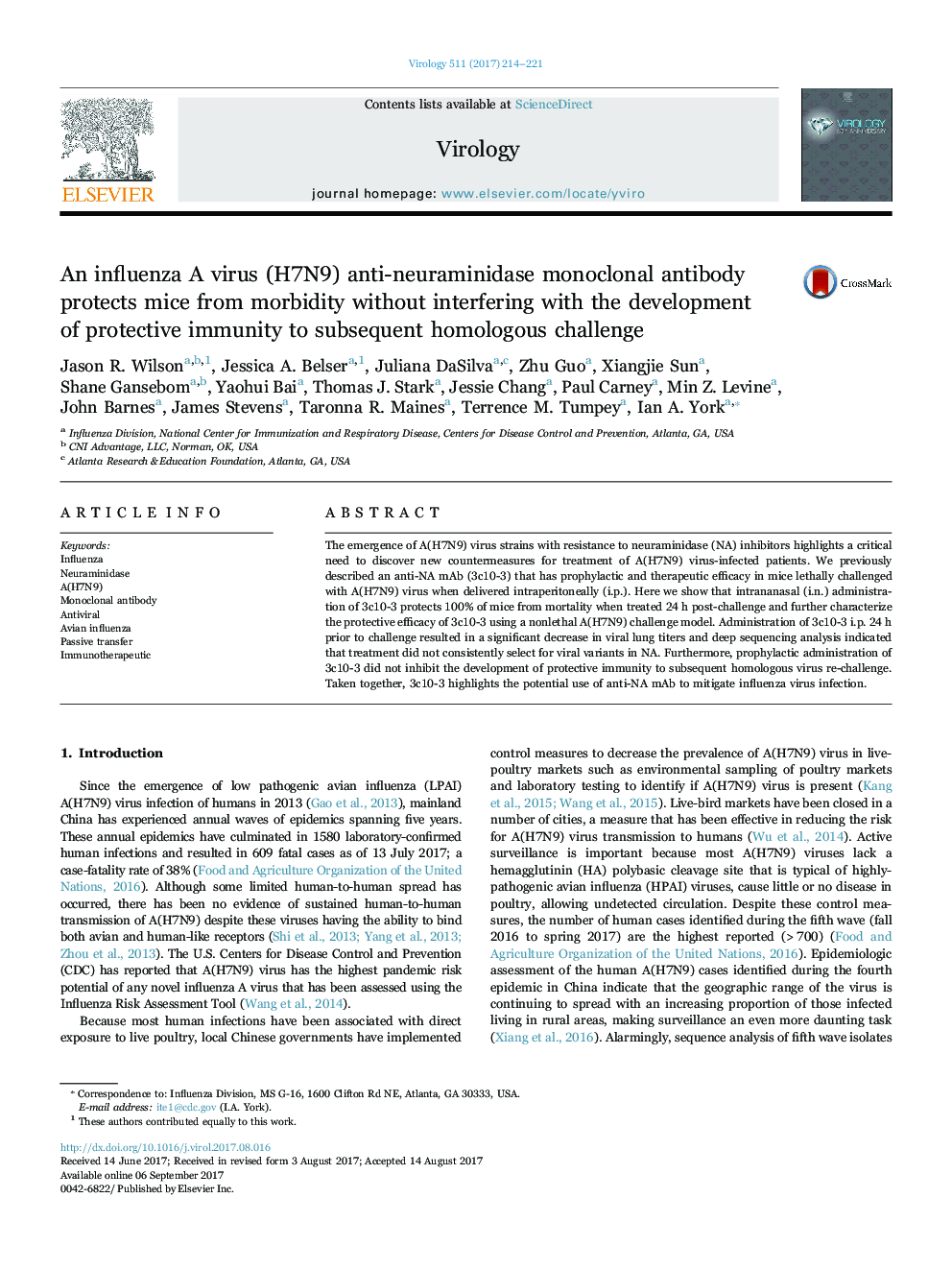| Article ID | Journal | Published Year | Pages | File Type |
|---|---|---|---|---|
| 5674904 | Virology | 2017 | 8 Pages |
Abstract
The emergence of A(H7N9) virus strains with resistance to neuraminidase (NA) inhibitors highlights a critical need to discover new countermeasures for treatment of A(H7N9) virus-infected patients. We previously described an anti-NA mAb (3c10-3) that has prophylactic and therapeutic efficacy in mice lethally challenged with A(H7N9) virus when delivered intraperitoneally (i.p.). Here we show that intrananasal (i.n.) administration of 3c10-3 protects 100% of mice from mortality when treated 24Â h post-challenge and further characterize the protective efficacy of 3c10-3 using a nonlethal A(H7N9) challenge model. Administration of 3c10-3 i.p. 24Â h prior to challenge resulted in a significant decrease in viral lung titers and deep sequencing analysis indicated that treatment did not consistently select for viral variants in NA. Furthermore, prophylactic administration of 3c10-3 did not inhibit the development of protective immunity to subsequent homologous virus re-challenge. Taken together, 3c10-3 highlights the potential use of anti-NA mAb to mitigate influenza virus infection.
Keywords
Related Topics
Life Sciences
Immunology and Microbiology
Virology
Authors
Jason R. Wilson, Jessica A. Belser, Juliana DaSilva, Zhu Guo, Xiangjie Sun, Shane Gansebom, Yaohui Bai, Thomas J. Stark, Jessie Chang, Paul Carney, Min Z. Levine, John Barnes, James Stevens, Taronna R. Maines, Terrence M. Tumpey, Ian A. York,
